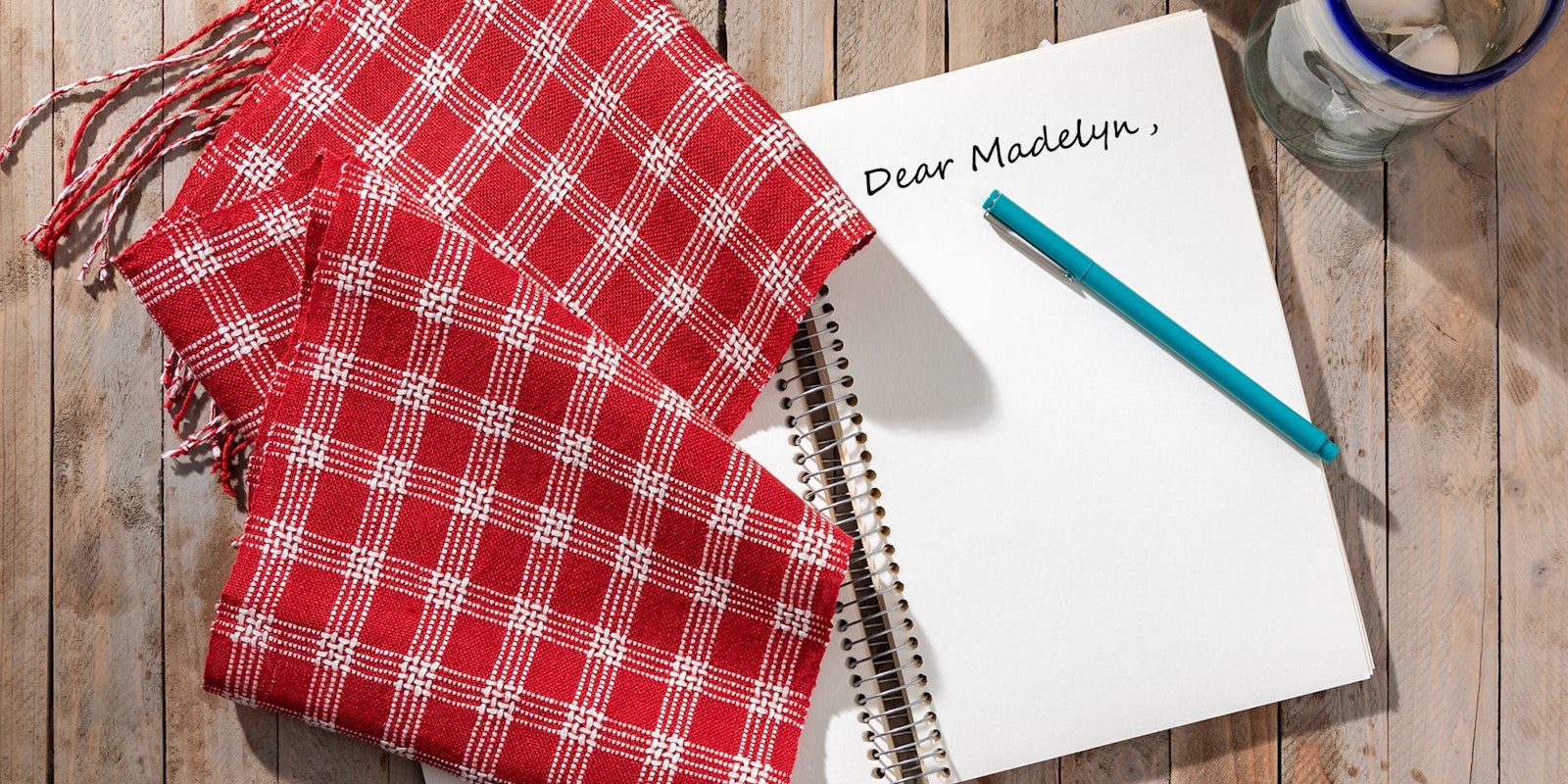We have two floating selvedge questions this week:
Many patterns in Handwoven have black dots at the edges of the threading diagram that are labeled "floating selvedge" without explanation. Can you help me with this?
—Alex
I used a floating selvedge with my first overshot project but I still have wavy edges on it. Is there a way to “heft up” the floating selvedge so that doesn’t happen again? Should I use two or three threads for the floating selvedge?
—Susan
Hi Alex and Susan!
So, Alex, a floating selvedge is a thread on each side of the warp that goes through the reed but not a heddle. It therefore stays in the middle of the shed. If the shuttle always goes around it, the weft is always brought out to the very edge of the fabric (otherwise if edge threads were down or up two picks in a row, the weft would turn inside the edges). Usually, you take the shuttle into each shed over the floating selvedge, out under it, but there are other orders that work as long as the shuttle always goes around it.
It is important to weight the floating selvedge (my guess is that your wavy edges were because of not weighting it, Susan). The floating selvedge does not take up as much as the other threads and therefore, unweighted, would get loose and “wavy.” It is not a good idea to double or triple it; it will show in that case. If you have trouble with it breaking, you are drawing in too much. The floating selvedge is NOT a way of avoiding draw-in. That can only be done with enough weft slack in the shed.
—Madelyn

